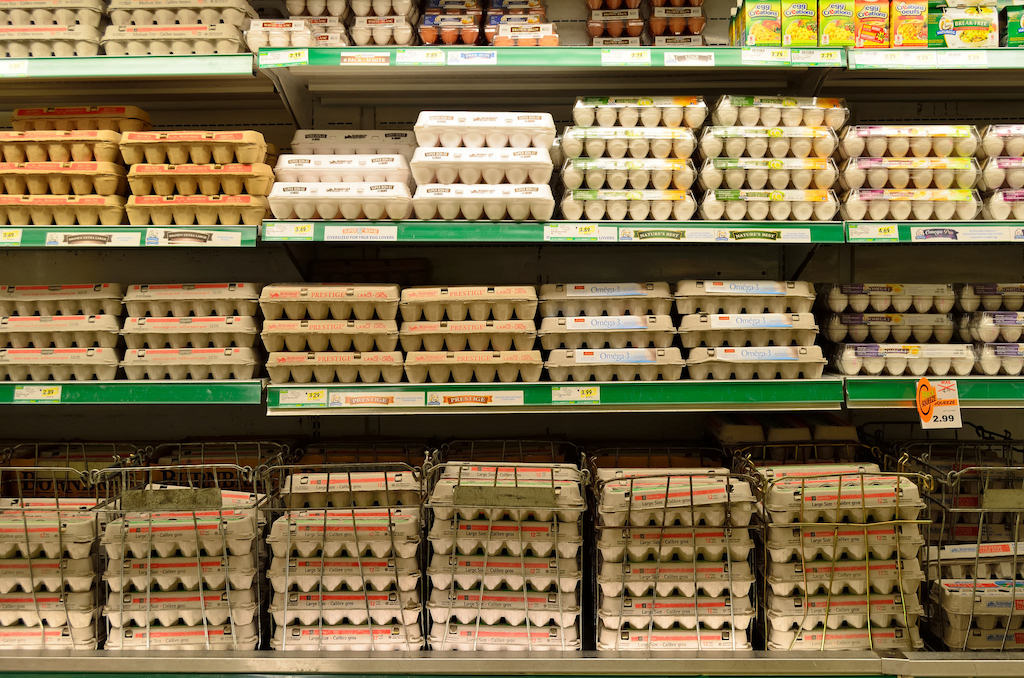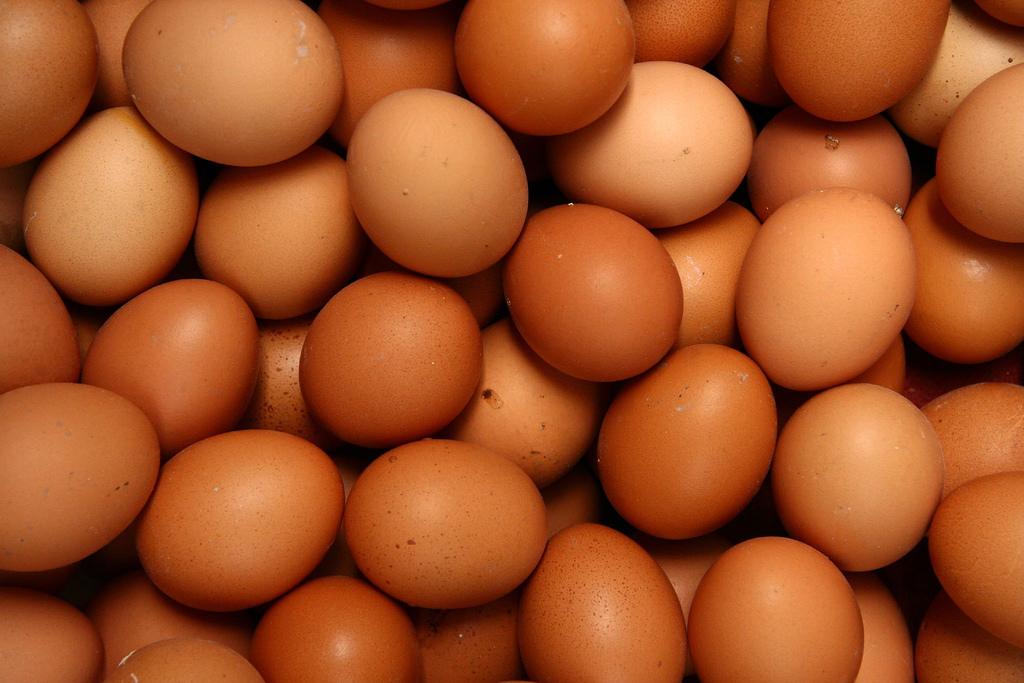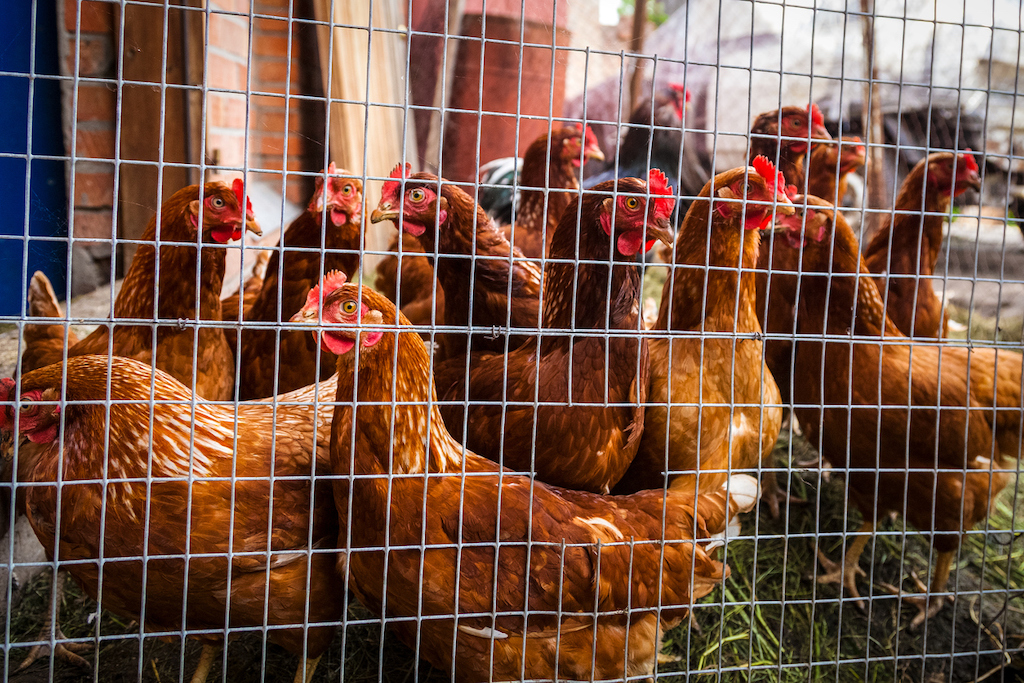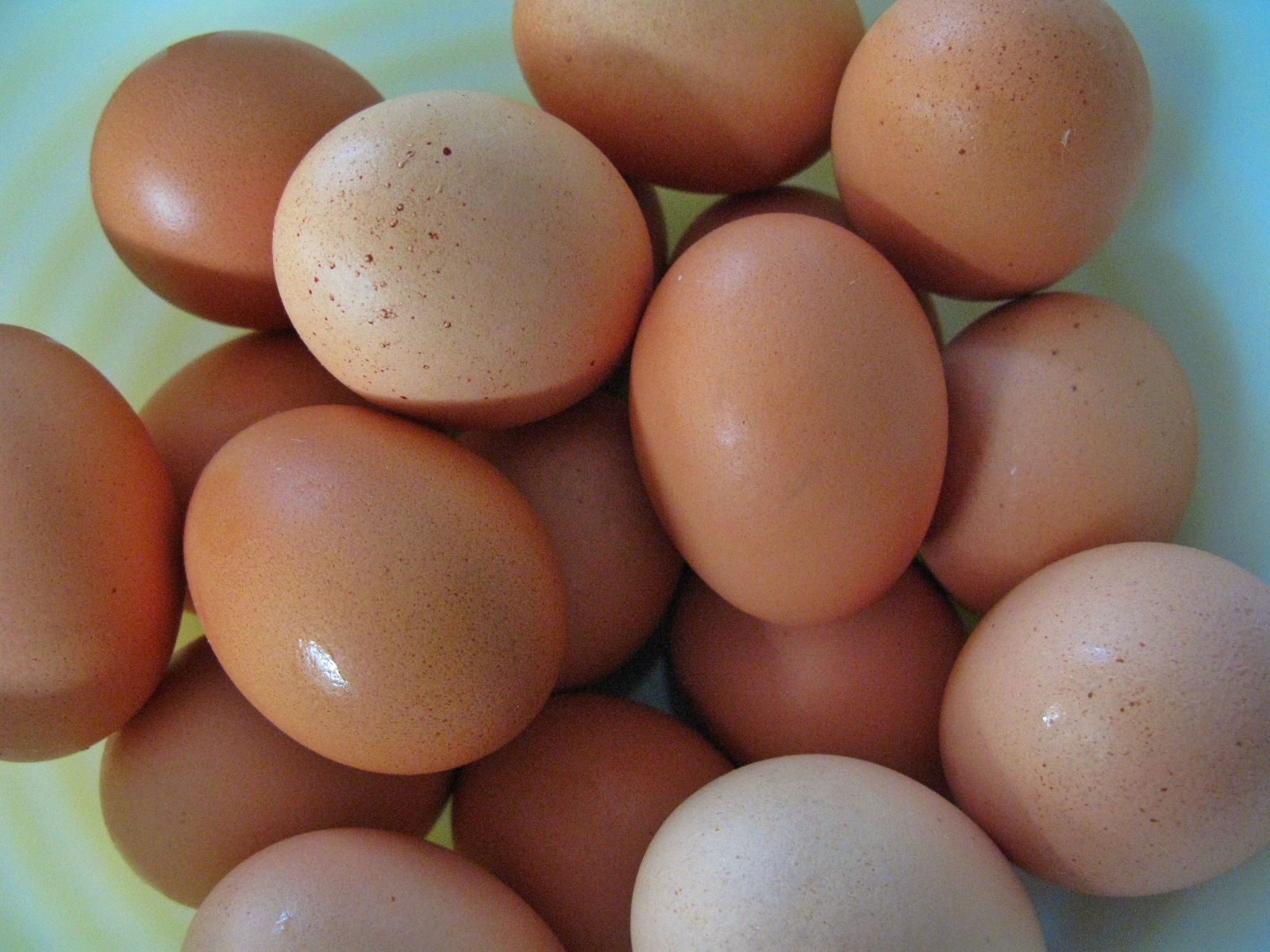Legislators in Iowa are considering a bill that would require grocery stores that sell eggs and participate in federal food assistance programs to always maintain an inventory of “conventional” eggs for sale—meaning eggs laid by hens living in cages and typically produced by larger-scale operations.
Senate Bill 2242, which was introduced by the Senate Agriculture Committee on February 12, has received initial subcommittee approval and will require full committee approval in order to move to the Legislature for a vote.
The bill is scant on language indicating who it’s intended to help—or even what specific problem it aims to solve. But it does appear to directly oppose a decade-long trend in consumer and retailer sentiment about egg production practices.
In 2008, California voters faced a first-ever proposition on their ballots. Commonly known as “Prop 2” or the “Farm Animal Cruelty Act,” the measure added a chapter to the state’s health and safety code that prohibited confining egg-laying hens, breeding pigs, and veal calves in any way that didn’t allow them to stand up, turn around freely, lie down, and fully extend their limbs. It passed with nearly 65 percent of the vote.
But California voters aren’t alone in their efforts to pressure conventional egg producers to transition to cage-free methods: a gathering wave of retailers—some of the world’s biggest, in fact, have committed to switching to cage-free, too. In 2015, McDonald’s announced it would make the transition by 2025. A protracted 10-year shift, however, sounds somewhat less threatening than Nestle’s November 2017 announcement that it’ll make the switch by 2020. Nestle is the world’s largest food company.
These marked evolutions would seem to add up to good news for growers of cage-free eggs and bad news for farmers using conventional methods.
So what are conventional egg producers to do? Their product already beats the cage-free option in price by a long shot. But low prices aren’t sufficient to reverse the public commitments from the likes of Walmart, Costco, Starbucks, and well, the state of California.
Which brings us back to Iowa, the country’s number one egg producer. The state is home to nearly 60 million hens which collectively lay almost 15 billion eggs per year. It makes sense, then, that the industry would fight to keep every last dozen on the shelf.
That means WIC users can buy corn flakes but not Lucky Charms, whole wheat bread but not a seeded loaf, plain yogurt but not organic. In Iowa, they typically have to buy their staples in the largest available containers—no single-serving milk bottle or eggs by the half dozen.
Right now, Iowa rules prohibit WIC purchasers from buying eggs that make “special health claims.” This new law would take that a step further by adding “specialty eggs”—defined as cage-free, free-range, or “enriched colony cage,” whatever that means—to the no-go category. That’s not unprecedented; WIC users in New York and Michigan, for instance, can’t use their benefits for organic, cage-free, free-range, or omega 3-enriched eggs.
But target WIC recipients with this proposed legislation, the logic goes, and those conventional eggs will have to stay on the shelf so they can be fully available to anyone who walks past. Here’s the other logic: Walmart’s cage-free policy wouldn’t stand a chance if it appeared to prevent low-income women with infants and children from purchasing eggs.
It’s a side-door workaround that essentially mandates stores carry a product they might otherwise avoid.
And the WIC program happens to be an ideal vehicle for imposing such restrictions.
Bill sponsor and Iowa Republican Representative Lee Hein told Iowa Radio he was “struggling with” the idea that his legislation would effectively impose a mandate on grocers. “But I also believe that we don’t need to bow down to the pressure of the animal rights groups, which are maybe growing, but are still a small segment of the population,” he said.
Proponents of bills like SB 2242 often say they will protect consumer choice. Though, that may ring slightly disingenuous to WIC recipients, whose food choices are already restricted by the program’s guidelines.
And while the mandate on a somewhat narrow range of approved food items is not unprecedented for WIC users, what is unprecedented is the weird flip-turn this law adds to the policy. Rather than saying, “WIC users can’t buy cage-free eggs,” the bill puts the onus on grocery stores to accommodate those 61,293 people using the program in Iowa: WIC users can’t buy cage-free eggs, and therefore all grocers must stock conventionally raised eggs, just in case the 2 percent of the population that uses these very specific benefits walks into the store and wants to purchase a dozen eggs using their government funds.
It’s one of those policy changes the average shopper might never notice: quite literally, it’s six of one, half a dozen of the other. But for the close observer, producers of conventional eggs seem to be pursuing whatever avenues possible to keep their product on the shelf and their chickens in the cage. And here’s one good way to think about all of this. Americans consume about 270 eggs per person every year. American egg producers are second only to China in total annual production—that’s more than 100 billion eggs a year (China produces more than 450 billion). It’s a highly centralized industry, worth nearly $6.5 billion to the American economy.
We’re willing to bet it won’t back off without cracking a few eggs.












